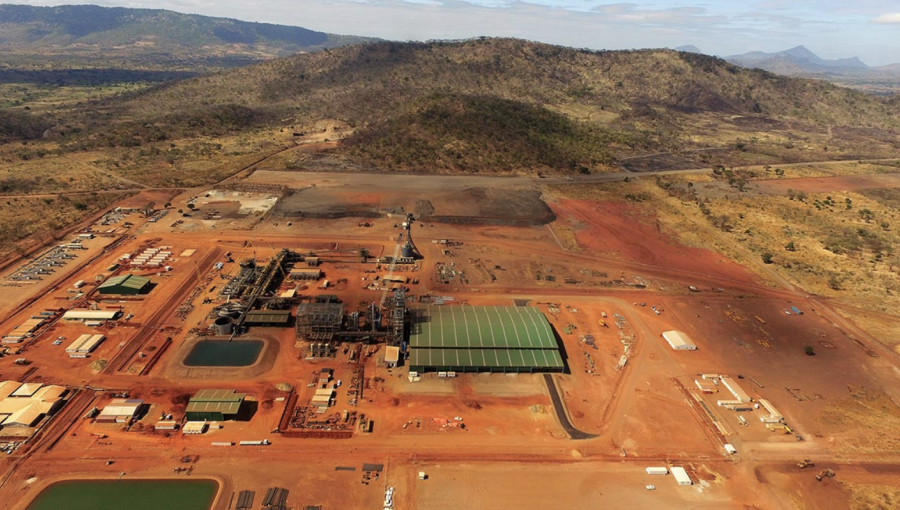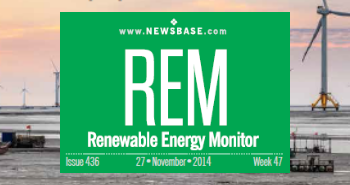Could graphite for electric vehicles make Mozambique rich or will the opportunity be squandered?

Mozambique boasts some of the largest graphite deposits globally, making it an important player in the worldwide electric vehicle (EV) supply chain. The mineral is an essential component in lithium-ion batteries that power EVs, underscoring the enormous opportunity the country has to become more prosperous.
Currently, Mozambique provides almost 10% of the world's graphite, a figure which is set to increase to around 15% by the end of the decade, according to Benchmark Mineral Intelligence. Most of the graphite potential is concentrated in its northern Cabo Delgado province, an impoverished and conflict-prone region, where Australian mining company Syrah Resources claims to operate Balama, the world's largest high-grade graphite mine.
Balama is one of the biggest large-flake deposits globally. The mining project, which began commercial production in 2019, has mineral reserves of 108mn tonnes grading 16% total graphitic carbon and mineral resources of 1.42bn tonnes grading 10% TGC. It involves two open-cast mines and is operated by Twigg Exploration and Resources, a Syrah subsidiary.
In December 2021, Syrah signed a four-year deal to supply graphite anode materials to Tesla, the American EV manufacturer, from its Vidalia plant located in the state of Louisiana, which uses graphite from the Balama mine.
In April 2023, Tirupati Graphite, the UK-registered mining company, acquired two graphite mining operations in Cabo Delgado Province, with which it hopes to furnish 8% of the total global supply by 2030. Triton Minerals, another Australian company, is also developing a graphite mine in the Ancuabe district in the same province, located close to the oldest graphite mine in the country owned by GK, a German company.
Triton has a large-scale concession with an estimated 5.7mn tonnes of graphite for at least 25 years. It also controls the graphite extraction Grafex project in the Ancuabe district, where Islamist insurgent attacks reportedly killed two security guards in June 2022.
The country expects to produce more than 329,040mn tonnes of graphite in 2024, a jump of more than 180% on 2023, according to government forecasts.
Mozambique has 34.86mn people and a $22.97bn economy, according to the IMF. It is one of the poorest countries in the world with an income per head of only $659 per year. Its economy is forecast to expand by 4.97% this year and by the same percentage next year. In 2024, inflation is estimated at 4.4% and the general government gross debt is 97% of GDP, high by African standards.
Furthermore, it is one of the world's most corrupt countries. It is ranked 145 out of 180 countries on Transparency International's Corruption Perceptions Index 2023.
During the past few years, the hydrocarbons sector has secured most investment but mining also has tremendous potential. The natural gas industry is a rapidly expanding sector, with several large gas fields being developed for export. In 2020 Mozambique expected to receive $96bn in revenue over the lifetime of natural gas production from the Rovuma basin, off the coast of Cabo Delgado. This is a huge sum, almost four times the country's GDP. But Islamist terrorist attacks that struck much of the province put major investments on hold.
The multi-billion dollar Total liquefied natural gas project (LNG) and Eni's planned second floating LNG project are now being revived, now that the Cabo Delgado region has become more peaceful.
Moreover, clean energy infrastructure is being developed in the country, including the $4.5bn hydroelectric mega-dam, Mphanda Nkuwa, a 1,500-MW power project located on the Zambezi river.
As well as graphite, Mozambique is endowed with large and diverse mineral deposits, which include coal (high-quality coking coal and thermal coal), iron ore, titanium, apatite, marble, bentonite, bauxite, kaolin, copper, gold, rubies and tantalum. A lot of this mineral potential is largely untapped.
The mining sector contributed 10.5% to GDP in 2022 but the government forecasts it will grow to 18.6% during 2024, owing to an increase in the production of minerals that are of global importance such as heavy sands, tantalite, gold, coal and graphite. Heavy sand production is geared towards minerals used in a wide range of industrial applications (such as zirconium, ilmenite and titanium). Coal is the country's most-extracted mineral, making Mozambique a key player in global coal markets.
In addition, Mozambique's admission to the Kimberley Process Certification Scheme, which regulates the trade in rough diamonds, creates possibilities for the Mozambican diamond industry. It presents investors with the opportunity to further explore diamonds in promising areas across the country.
Ruby mining also plays a huge role in the Mozambican economy, with Mozambique producing prolific quantities of rubies of all grades. In June 2023 a 55.22-carat ruby, the Estrela de Fura, was mined in Montepuez in Mozambique; it broke the record as the largest and most valuable gem of its kind ever sold, grossing $34.8mn in an auction in New York.
Gemfields, the British miner, owns a 75% stake in Montepuez Ruby Mining, which started operations in February 2012 and represents a $130mn investment in developing the country's northern ruby deposits in a concession area of 2,600 square km. The company estimates that its existing concession contains an estimated 467,000 carats worth of rubies in both primary and secondary mineralisation.
Furthermore, gold deposits in Niassa, Tete and Manica provinces have attracted domestic and international investor interest in recent years. Gold mining has been slow to develop, as most of its activities are done by informal artisanal miners. However, increased regulation of gold mining may lead to larger-scale production, as the government begins to require miners to formalise their legal status.
The country's titanium industry is also expanding, with several mines in operation and many more planned for the future.
Yet Mozambique's graphite is the mineral capturing the world's attention. The US government sees the country as a vital alternative to Chinese graphite, which currently accounts for around 70% of global supply. In September 2023, the US Development Finance Corporation said it would provide a loan of up to $150mn to develop graphite mining and processing at Syrah's Balama mine to "diversify the global supply chain".
The Balama project has a production capacity of 350,000mn tonnes per year (tpy) and a 50-plus-year life. It could represent a whopping 40% share of the worldwide graphite market. Syrah will mostly export to the Chinese and US markets. Last year the Balama mine had to be suspended temporarily, as worldwide prices and demand were too low.
In February 2024, Syrah said it would supply natural graphite from Balama to South Korean chemical and battery material maker Posco Future M. Under the six-year deal, Syrah will supply up to 2,000 tonnes per month of natural graphite in the year following commissioning. This can be increased to 5,000 tonnes per month, with at least six months' notice, from the second year of the deal to the end of the term.
Natural graphite has the potential to make Mozambique a rich country but one of the biggest threats is synthetic graphite. Synthetic graphite is manufactured primarily by heating petroleum coke, a byproduct of oil refining, to an extremely high temperature. It is currently very energy-intensive and expensive to produce but its quality is much higher than natural graphite. New sources of synthetic graphite are coming on stream in Europe and the US.
Moreover, Mozambique's legal system is civil law based. The key legal framework for mining activities is the Mining Law of August 2014, which establishes the general principles governing the award and exercise of mineral rights. The Mining Law Regulations of December 2015 establish the rules for prospecting and exploration operations, development, processing and mining, as well as geological mapping, geological mining and metallurgical and scientific studies.
According to the country's constitution, all mineral resources found in the soil, subsoil, inland waters, continental shelf and exclusive economic zone are the sole property of the state. The Mozambican State, as the original owner of mineral resources, acts as a grantor-regulator of mineral rights and is responsible for promoting the evaluation of existing mining potential, awarding mineral rights and overseeing the conducting of mineral activities.
State participation is not expressly established in the Mining Law, which only sets out that the state should progressively increase its participation in mining projects. However, according to the Law on Public-Private Partnerships, Large-Scale Enterprises and Business Concessions and relevant regulations, which apply to large-scale mining projects, the state reserves the right to negotiate a free carried participation of no less than 5%.
Mineral rights are awarded by the Ministry of Mineral Resources and Energy or the provincial governor, depending on the nature of the operations, through a licence or contract. Corporate income tax, which is a profit-based tax, is payable at a rate of 32%. Production Tax should be paid by natural or legal persons developing mining activities, calculated based on the value of the mineral extracted. It is levied at 8% on diamonds, 6% on precious metals, precious and semi-precious stones and heavy sand, 1.5% on sand and stones and 3% on base minerals, coal, ornamental rocks and other mineral products.
Furthermore, the government has been actively promoting investment in the mining sector, providing tax incentives and other support to local and foreign investors. This has helped to attract a growing number of companies to the sector.
Mozambique's economic growth and integration are also driven by its location, as the country is situated in a prime position in the southern African region with extensive trade opportunities. Its neighbours such as Zimbabwe and Malawi are landlocked.
However, one of the biggest challenges the mining sector is facing is poor roads, railways and ports infrastructure. Their development must keep pace with the demand for the country's natural resources. The government is working to improve infrastructure and support for local companies, including access to financing and markets. It is also promoting environmental sustainability and responsible mining practices to help ensure the sector's long-term viability.
The country's mining industry should benefit from increased investments in industrialisation, the use of automation in mining activities and advancements in the logistics and transportation sectors. Furthermore, the development of local processing industries could significantly boost the value-added benefits, create higher-skilled jobs and increase tax revenues. By diversifying its economy and moving up the value chain, Mozambique could become less exposed to volatile commodity prices, and more able to protect itself against exchange rate volatility and foreign currency reserve pressures.
Managing new resource windfalls responsibly also requires accountable and transparent institutions, allied with appropriate tax regimes and sound public financial management. Mozambique has tremendous opportunities, in particular natural graphite. But it must make the most of its graphite potential today before advancements in synthetic graphite come along in the future. The country is one of the world's most corrupt but it is essential that the whole society benefits from graphite wealth and that the opportunity is not squandered.


Follow us online